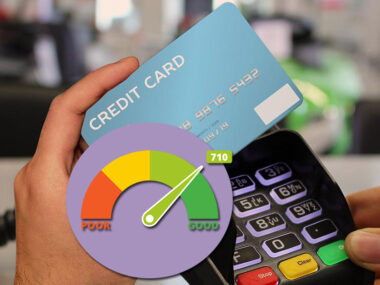The most widely used credit score equation comes from the Fair Isaac Corporation (FICO). A perfect credit score on the FICO scale is 850, with 800 being the minimum for the “exceptional” FICO range.
A “very good” FICO credit score is between 740 and 799. Those who have a credit score above 670 are still in the “good” range. Those who fall below 670 are in the “fair” and “very poor” ranges. Lenders consider these people subprime borrowers, and it may be difficult for them to get loans.
VantageScore is an alternative to FICO credit score. Its tiers are slightly different. An “excellent” VantageScore is 781 to 850. Like those with an exceptional FICO score, these people qualify for the best loan terms.
A “good” VantageScore is 661 to 780. People who score in this range get average rates and terms on their loans. Having a credit score anywhere between good and excellent is beneficial to your financial health. However, there are some differences between the good and excellent, and some perks to being on the higher end of the scale.
Table of Contents
Good vs. Excellent Credit
While most lenders will consider loan, mortgage, or credit card applicants from any of these tiers, lenders typically prefer scores above 700. The reason for this is because the higher your credit score, the better your repayment and credit utilization percentages are, which are important for repaying debts.
Anyone in the good or very good range will likely qualify for decent loan terms. However, if you’re looking to get the best loan terms, the most generous rewards on credit cards, or other exclusive offers, then you’ll need excellent credit.
This is the main difference when it comes to good versus excellent credit scores — the perks that come along with it. With an excellent credit score, you may also qualify for higher borrowing amounts or credit limits that those with lower scores don’t qualify for.
FICO Score
Here is a closer look at what lenders see when they look at your FICO credit score.
- 800 to 850 is an “exceptional” FICO credit score. People in this range qualify for the best terms when borrowing money. You need to manage your credit exceptionally well to earn a high score, so lenders see little or no risk in lending money or extending credit to people in this tier.
- 740 to 799 is a “very good” FICO credit score. People in this range can get better-than-average terms when obtaining loans or credit cards. They will not qualify for the best terms, but lenders consider them very low-risk customers, so they will get low interest rates and a chance to earn credit card rewards.
- 670 to 739 is a “good” FICO credit score. A small percentage of people in this bracket will fail to pay back their loans in the future. Therefore, they will qualify for average terms on loans and credit cards. They cannot always qualify for the same terms as people in the two higher tiers.
You need at least six months of credit history to get a FICO score, so people who are just getting started will have to wait a while to build their credit history in order to rise into the exceptional range.
VantageScore
VantageScore has a slightly wider range than FICO. Here’s a closer look at what lenders are seeing with your VantageScore:
- “Excellent” scores on the VantageScore range are between 781 and 850. If your score falls within this range, you can expect the best possible loan rates, credit rewards, and other perks that come from having one of the highest credit scores.
- VantageScore classifies anything between 661 and 780 in the “good” range. This will open up a lot of loan and credit opportunities for you, but you may not be getting the most premium rates.
- 601 to 660 is VantageScore’s “fair” range. If your score falls within this range, likely you’ll qualify for some lending opportunities, but you may want to look closely at your credit report and see if there is any room for improvement, in order to get better rates.
Unlike FICO, you only need one month of credit history to get a VantageScore. This score could be an advantage to people who are just starting out and want to reach the excellent range quickly.
Benefits of an Excellent Credit Score
An excellent credit score qualifies you for the best possible terms from lenders and credit card companies. While you don’t need an excellent credit score from VantageScore or FICO to get a loan or card with favorable terms, it makes the approval process easier, and the perks are well worth it.
Some of the benefits of an excellent credit score may be:
- Lower-than-average interest rate;
- Credit cards with generous benefits;
- Virtually guaranteed approval for all cards;
- Higher borrowing amounts or credit limits.
These are just some of the most common benefits of having an excellent credit score. Depending on your lender, you may qualify for even more perks. Having an excellent credit score is intrinsically beneficial as well, as it shows that your finances are healthy. This can give you peace of mind for any future financial endeavors.
How to Get an Excellent Credit Score
While the calculations for FICO and VantageScore are slightly different, the variables are the same, so the steps to building an excellent credit score are similar for both rating systems. Some habits that can help you develop an excellent credit score include:
- Avoid late payments or non-payment. Payment history is the most influential variable for both FICO and VantageScore. It makes up 35% of your FICO score, meaning that just a single late payment can hurt your credit score.
- Keep your credit utilization ratio low. Your credit utilization ratio is a comparison between your credit limit and the amount you borrow. This figure accounts for 30% of your credit score. A lower utilization ratio is better for your credit score, which is why paying down your balances on a credit card can help improve your credit.
- Keep your credit cards accounts open. The length of your credit history is an important consideration for FICO. It takes time to build an excellent credit score, so the longer your history is, the higher this portion of your score. VantageScore gives account history slightly less weight, however, it’s still important.
- Space out opening new accounts. Your credit score also measures your borrowing habits. When you open several credit card accounts at once, it looks like you are borrowing recklessly or cannot manage your credit. Spacing out opening any new accounts, and keeping your number of credit accounts relatively low is the best way to manage this aspect of your credit.
You can increase your chances of getting an excellent credit score by having different types of credit and loans. In other words, you can’t merely open a few credit cards and earn an excellent credit score quickly.
Earning excellent credit involves a combination of many things. These things include effectively managing your credit accounts, paying your account balances on time, and being mindful of your credit utilization ratio over an extended period of time. Building good credit can be a lengthy process, but you’ll find it can definitely be worth it.
Image Source: https://depositphotos.com/





